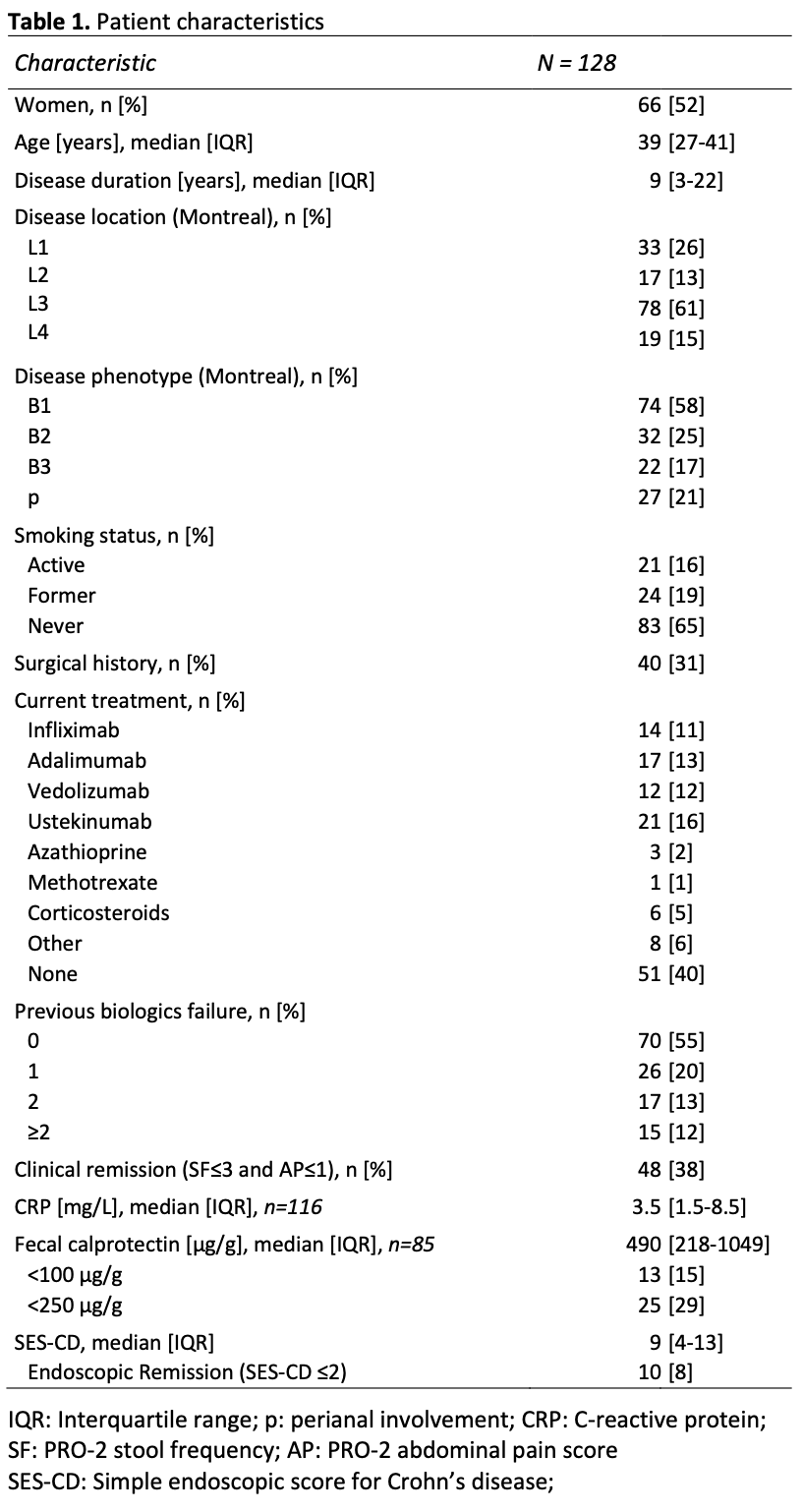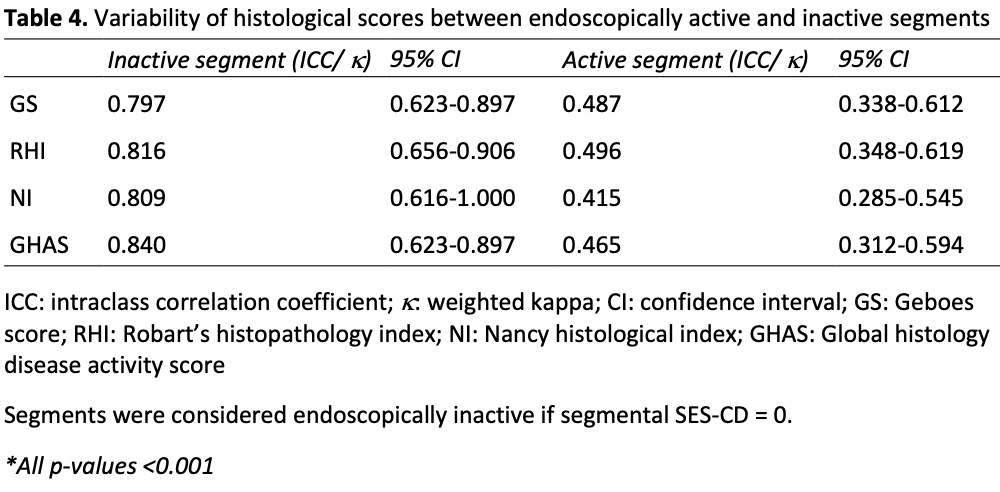P271 Variability in histologic activity of paired same-segment biopsies in Crohn’s disease dictates multiple biopsies needed to accurately evaluate histological status
Lenfant, M.(1,2)*;Vermeire, S.(1,2);Sabino, J.(1,2);Ferrante, M.(1,2);Verstockt, B.(1,2);De Hertogh, G.(3);
(1)Translational Research in Gastrointestinal Disorders - KU Leuven, Department of Chronic Diseases and Metabolism, Leuven, Belgium;(2)University Hospitals Leuven, Department of Gastroenterology and Hepatology, Leuven, Belgium;(3)University Hospitals Leuven, Department of Pathology, Leuven, Belgium;
Background
At present, the significance of histologic remission in Crohn’s disease [CD] is unclear. One of the main reasons is the heterogeneous distribution of the lesions. This contrasts with ulcerative colitis, where histologic scoring systems have been applied with success on limited numbers of biopsies. We assessed the variability of histologic activity in paired same-segment biopsies from CD patients.
Methods
All CD patients undergoing ileocolonoscopy between January 2020 and July 2022 at our tertiary referral center were eligible for inclusion. Clinical data were retrospectively collected from medical records. Endoscopies were video-recorded and the Simple Endoscopic Score for Crohn’s Disease [SES-CD] was used to evaluate endoscopic activity. Paired biopsies were taken within the most affected area per segment, in accordance with ECCO guidelines.
The Global Histology Activity Score (GHAS), the Geboes Score [GS], the Robart’s Histopathology Index [RHI] and the Nancy Histological Index [NHI] were determined for each biopsy by an experienced IBD pathologist [GDH] blinded to the endoscopic scores. The cut-off values for histologic remission were set at GHAS ≤4, GS <2B.1, RHI ≤3 and NI ≤1 (absence of neutrophils for RHI and NI).
Variability was assessed by intraclass correlation coefficient [ICC] and Kappa statistics. Association between histologic and endoscopic scores was studied with Spearman’s rank correlation coefficient.
Results
A total of 151 biopsy pairs from 128 patients were analysed. Patient characteristics are summarised in Table 1. Endoscopic activity was observed in 79% of segments. In patients with endoscopic remission, histologic activity (presence of neutrophils) was found in 29% of cases. There was a moderate association between the endoscopic and histologic assessment, with correlation levels ranging from 0.48 to 0.52 [p<0.001].
Histologic indices showed fair agreement between paired biopsies [Table 2]. Looking at the predefined cut-offs, moderate variability across the different histological scores was seen [Table 3]. When comparing biopsies from segments with endoscopic activity and those without, overall higher variability in active segments and substantial agreement in paired biopsies from inactive segments was observed [Table 4].
Conclusion
The patchy nature of microscopic inflammation in CD is reflected in the histologic scores of paired same-segment biopsies, with only moderate agreement across histologic scoring indices, although lower variability was seen in biopsies from endoscopic inactive segments. Endoscopic activity only moderately reflects histological status. Multiple biopsies per segment are therefore needed for accurate histological evaluation, the optimal number necessary remains to be explored.





